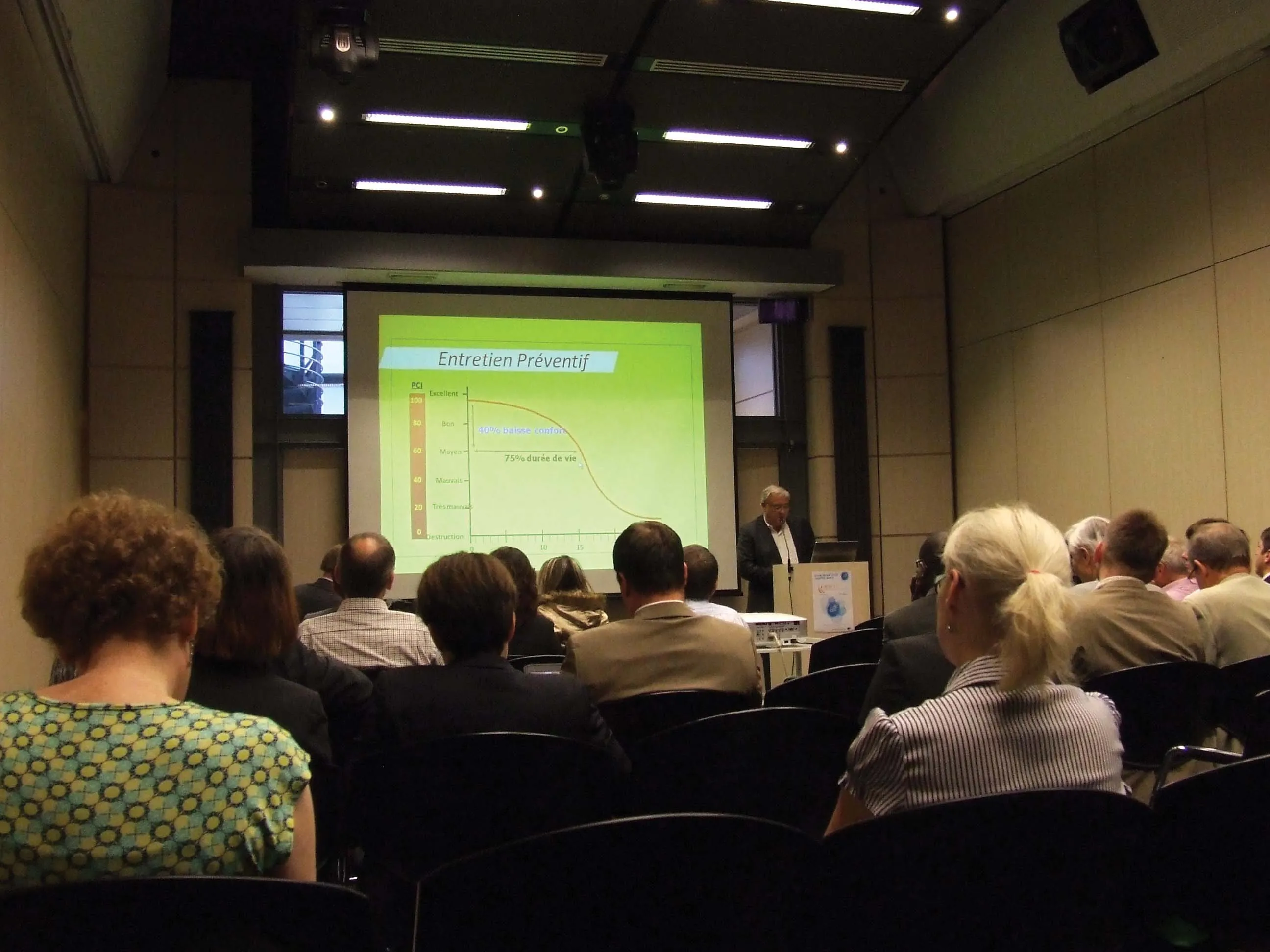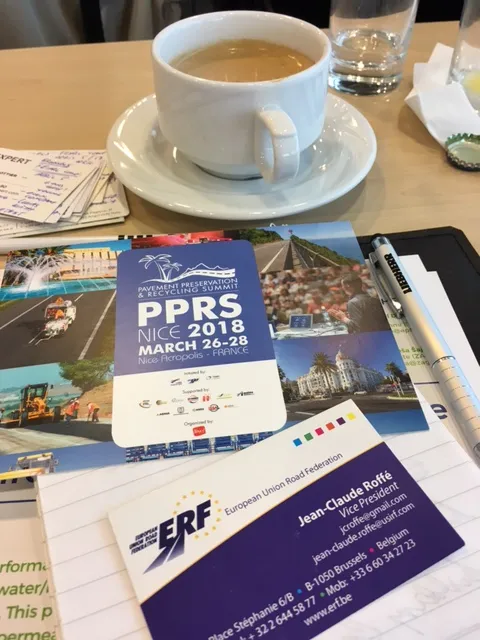The innovative DURABROADS project will help deliver a sustained reduction of fatalities in the long term, writes the ERF’s José Diez
In 2012, Europe recorded the lowest number of fatalities since the first data were collected. All in all, fatalities were down by 9% in 2012, which means that 3,000 lives were saved that year. Should the current pace continue, we can be confident that the ambitious objective of reducing fatalities by 50% by 2020, compared to 2010, will be reached.
To achieve the goals of
April 2, 2014
Read time: 4 mins

The innovative DURABROADS project will help deliver a sustained reduction of fatalities in the long term, writes the ERF’s José Diez
In 2012, Europe recorded the lowest number of fatalities since the first data were collected. All in all, fatalities were down by 9% in 2012, which means that 3,000 lives were saved that year. Should the current pace continue, we can be confident that the ambitious objective of reducing fatalities by 50% by 2020, compared to 2010, will be reached.
To achieve the goals of the European Road Safety Action Programme, the2465 European Commission unveiled back in 2010 a mix of measures (policy, campaigns, research and legislation) that focus on the road safety triangle, i.e. the driver, the vehicle and the infrastructure.
One of the most pressing challenges facing the infrastructure sector nowadays is the lack of maintenance funds as a result of government cutbacks. In this sense, the development of techniques and materials that will increase the life cycle of road surface and limit interventions is of utmost importance.
At the same, and in line with the EU flagship initiative ‘a resource efficient Europe’, it is important that in the future, Europe and its industry render their practices more environmentally friendly, by also ensuring a more optimal use of resources during the construction and maintenance of roads. Given that road construction and maintenance involve a considerable use of resources, the road sector clearly has a large role to play.
The newly launched DURABROADS project aims to tackle these dual challenges. Co-financed by the European Commission’s Seventh Framework Programme, it aims at providing economic growth by promoting a safer, more durable and competitive construction and rehabilitation of road infrastructure in the future. DURABROADS main objective will be to develop pavements adapted to new challenges and achieving an efficient, smarter and safer mobility based on innovative nanotechnology, enhanced asphalts, and through the optimisation of procedures to build and rehabilitate long-life, safer and greener roads.
Given that roads are subject to changing conditions, i.e. increasing traffic, higher permitted load on pavements and new environmental conditions, it is important to reconsider established assumptions on road construction design and maintenance. As a first step, and in order to assess the state of the art in advanced asset management methods, the project will identify the best practices from different research studies in different countries in order to provide highway managers and road safety experts with a holistic overview of optimal solutions. In practice, this will be achieved by defining optimisation criteria that cover all aspects of the road and which cover its whole lifecycle.
Going from theory to implementation, new DURABROADS pavements will subsequently be adapted to freight corridors and climate change by means of innovative designs and the use of greener materials improved by nanotechnology. More specifically, the project will develop eco-friendly asphalt pavements more adapted to climate change and freight traffic volumes; demonstrate the environmental benefits and economic feasibility of DURABROADS solutions; and demonstrate the most promising DURABROADS pavement sections by the implementation in a real Case scenario.
As a third and final step, the project will strive to maximise its impact by ensuring that DURABOADS results are integrated into existing guidelines and standards. These will include the definition of criteria that will allow for the inclusion of DURABROADS solutions into Green Public Procurement Procedures that are currently being updated by the European Commission services; and the identification of the implications of the new DURABROADS materials for relevant CEN standards and to investigate how the findings of the project can feed into the elaboration of ongoing standardisation work.
The DURABROADS project kicked off in October 2013 and is expected to conclude in March 2017, with the presentation of guidelines and recommendations of the best practices identified during its lifetime. It will be carried out by a multi-disciplinary consortium combining research centres, leading infrastructure companies, SMEs and European Associations: University of Cantabria (Spain),976 Acciona Infraestructuras S.A (Spain), Fraunhofer (Germany), Institute for Transport Sciences (Hungary), 1202 European Road Federation (Belgium), 1582 Tecnalia Research and Innovation (Spain), Norwegian Graphite (Norway), BSRIA (UK) and Inzenierbuve Ltd (Latvia).
Further information can be found in the dedicated website: %$Linker:2 External <?xml version="1.0" encoding="utf-16"?><dictionary /> 0 0 0 oLinkExternal www.durabroads.eu Visit: www.durabroads.eu false http://www.durabroads.eu/ false false %>
In 2012, Europe recorded the lowest number of fatalities since the first data were collected. All in all, fatalities were down by 9% in 2012, which means that 3,000 lives were saved that year. Should the current pace continue, we can be confident that the ambitious objective of reducing fatalities by 50% by 2020, compared to 2010, will be reached.
To achieve the goals of the European Road Safety Action Programme, the
One of the most pressing challenges facing the infrastructure sector nowadays is the lack of maintenance funds as a result of government cutbacks. In this sense, the development of techniques and materials that will increase the life cycle of road surface and limit interventions is of utmost importance.
At the same, and in line with the EU flagship initiative ‘a resource efficient Europe’, it is important that in the future, Europe and its industry render their practices more environmentally friendly, by also ensuring a more optimal use of resources during the construction and maintenance of roads. Given that road construction and maintenance involve a considerable use of resources, the road sector clearly has a large role to play.
The newly launched DURABROADS project aims to tackle these dual challenges. Co-financed by the European Commission’s Seventh Framework Programme, it aims at providing economic growth by promoting a safer, more durable and competitive construction and rehabilitation of road infrastructure in the future. DURABROADS main objective will be to develop pavements adapted to new challenges and achieving an efficient, smarter and safer mobility based on innovative nanotechnology, enhanced asphalts, and through the optimisation of procedures to build and rehabilitate long-life, safer and greener roads.
Given that roads are subject to changing conditions, i.e. increasing traffic, higher permitted load on pavements and new environmental conditions, it is important to reconsider established assumptions on road construction design and maintenance. As a first step, and in order to assess the state of the art in advanced asset management methods, the project will identify the best practices from different research studies in different countries in order to provide highway managers and road safety experts with a holistic overview of optimal solutions. In practice, this will be achieved by defining optimisation criteria that cover all aspects of the road and which cover its whole lifecycle.
Going from theory to implementation, new DURABROADS pavements will subsequently be adapted to freight corridors and climate change by means of innovative designs and the use of greener materials improved by nanotechnology. More specifically, the project will develop eco-friendly asphalt pavements more adapted to climate change and freight traffic volumes; demonstrate the environmental benefits and economic feasibility of DURABROADS solutions; and demonstrate the most promising DURABROADS pavement sections by the implementation in a real Case scenario.
As a third and final step, the project will strive to maximise its impact by ensuring that DURABOADS results are integrated into existing guidelines and standards. These will include the definition of criteria that will allow for the inclusion of DURABROADS solutions into Green Public Procurement Procedures that are currently being updated by the European Commission services; and the identification of the implications of the new DURABROADS materials for relevant CEN standards and to investigate how the findings of the project can feed into the elaboration of ongoing standardisation work.
The DURABROADS project kicked off in October 2013 and is expected to conclude in March 2017, with the presentation of guidelines and recommendations of the best practices identified during its lifetime. It will be carried out by a multi-disciplinary consortium combining research centres, leading infrastructure companies, SMEs and European Associations: University of Cantabria (Spain),
Further information can be found in the dedicated website: %$Linker:







